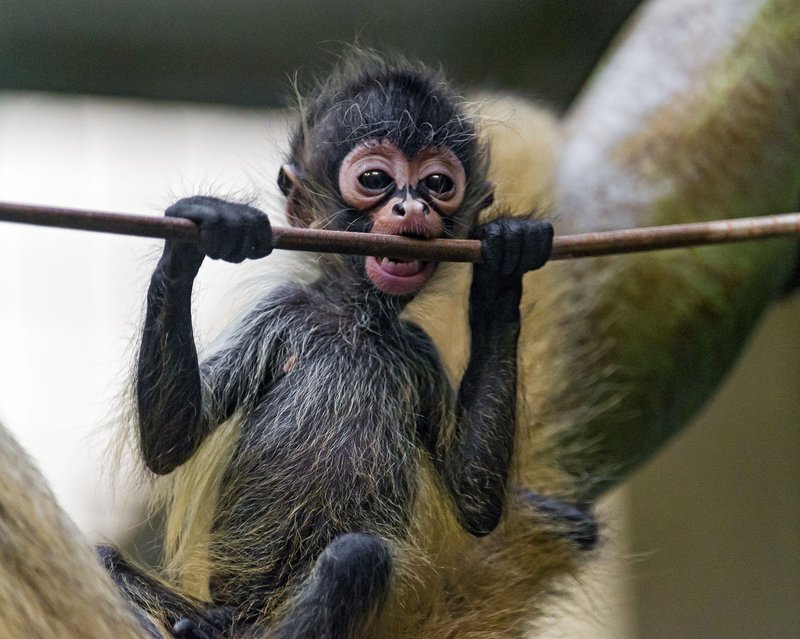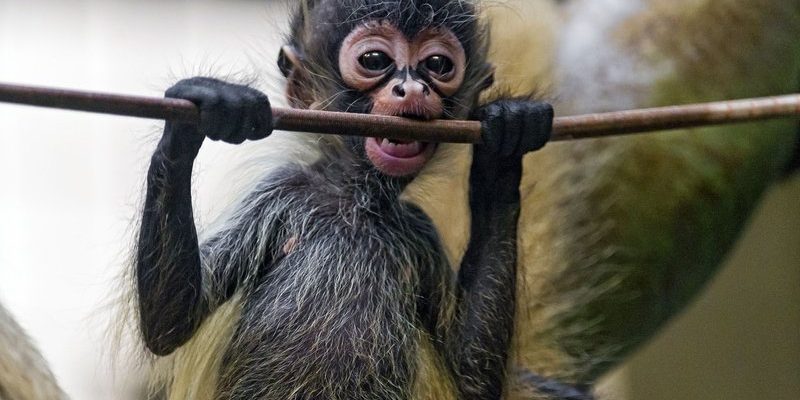
So, what makes spider monkeys tick, and how do they compare to other primates? Let’s dive into their cognitive abilities, social behavior, and how they interact with their environment. By the end, you might find yourself having a newfound respect for these quirky little creatures.
Cognitive Abilities of Spider Monkeys
Spider monkeys are part of the Atelidae family, known for their impressive intelligence. When it comes to cognitive skills, they are often seen as the brainiacs among primates. These monkeys have shown remarkable abilities in problem-solving, which is essential for their survival in the wild.
One of the key areas where their intelligence shines is in tool use. For instance, they can devise ways to reach food that’s otherwise inaccessible. Imagine a monkey using a stick to poke into a tree trunk to extract insects—pretty clever, right? This behavior highlights their ability to think ahead and adapt their strategies based on their needs, much like us when we solve daily problems.
Additionally, spider monkeys have excellent spatial awareness. This means they have a good understanding of their surroundings and can navigate the forest canopy with ease. They remember the locations of food sources and the safest routes, which is crucial for their survival in dense jungles. Their impressive memory allows them to thrive in environments rich with challenges and opportunities.
Social Intelligence and Communication
Social behavior is another aspect where spider monkeys show off their intelligence. They live in groups called troops, often consisting of several females and a few males. Their social dynamics can be quite complex, resembling a little community where relationships matter.
You might be amazed to learn that spider monkeys communicate using various vocalizations, gestures, and body language. They have a range of sounds, from loud calls that can be heard from miles away to softer vocalizations for more intimate exchanges. This kind of communication is vital for coordinating activities, like foraging for food or alerting others to dangers.
In addition, they exhibit behaviors that suggest they can empathize with one another. For example, if one member of the troop is in distress, others often come to their aid. This kind of emotional support among group members indicates a higher level of social intelligence, helping them maintain strong bonds and navigate their social world effectively.
Learning and Problem-Solving in Spider Monkeys
When it comes to learning, spider monkeys are quite adept. They can learn from their experiences, which is a sign of intelligence. For instance, when faced with a new challenge—like accessing a tricky food source—they can observe and mimic the successful techniques of more experienced group members. This ability to learn from others is akin to how we might ask a friend for help when facing a tough problem.
Spider monkeys also display signs of deferred imitation, meaning they can remember an action and replicate it later, even if the demonstration is not happening in front of them. This kind of long-term memory is essential for survival, as it helps them remember which techniques work best for solving problems over time.
In their natural habitat, they might face various challenges, such as finding food or escaping predators. Their ability to think critically and adapt their strategies based on past successes or failures showcases their cognitive flexibility.
Environmental Adaptations and Survival Strategies
Spider monkeys are incredibly adaptable creatures, which contributes to their ability to thrive in diverse habitats. They often live in tropical rainforests but can also be found in drier areas, showcasing their flexibility. This adaptability is a testament to their intelligence and cognitive prowess.
These monkeys are arboreal, meaning they spend most of their time in trees. Their long limbs and prehensile tails allow them to swing effortlessly through the canopy. This physical agility, combined with their cognitive skills, helps them dodge predators and explore their environment.
Furthermore, their diet consists mainly of fruits, leaves, and flowers, which means they need to remember where to find these food sources throughout the different seasons. They often travel long distances daily to forage, demonstrating their excellent navigation skills and memory. This ability to adapt not just physically but also mentally to their environment emphasizes their intellect.
Comparing Spider Monkeys to Other Primates
When you stack spider monkeys against other primates, it’s clear they hold their own in the intelligence department. For example, compared to capuchin monkeys, spider monkeys tend to have a more complex social structure and communication methods. Capuchins are known for using tools, but spider monkeys have their unique problem-solving style, primarily revolving around their social skills and environmental navigation.
However, when we look at spider monkeys alongside great apes like chimpanzees and orangutans, they face a bit of a challenge. Great apes tend to have more advanced problem-solving skills, particularly in tool use and complex social interactions. That said, spider monkeys still excel in their niche, showcasing impressive skills that suit their lifestyles.
While it’s easy to compare intelligence across species, it’s essential to remember that each primate has evolved unique skills that serve them well in their specific environments. So while spider monkeys may not be the top of the class in every category, they certainly shine in areas that matter to their survival.
The Importance of Spider Monkey Intelligence for Their Conservation
Understanding the intelligence of spider monkeys is more than just an academic exercise—it’s essential for their conservation. As deforestation and habitat loss threaten their populations, knowing how these monkeys think and behave helps conservationists develop effective strategies to protect them.
By recognizing their cognitive abilities, conservation efforts can focus on preserving not only their physical habitat but also their social structures. This means ensuring that they can live in groups, maintain their learned behaviors, and continue to adapt to changing environments.
Conservation programs might also involve educating local communities about the importance of spider monkeys and their role in the ecosystem. When people understand that these animals are intelligent beings with complex social lives, they might be more inclined to support conservation efforts. Protecting spider monkeys ultimately helps maintain the biodiversity of their habitats, benefiting countless other species as well.
In summary, spider monkeys are not just playful creatures swinging through the trees; their intelligence runs deep. From their problem-solving skills to their complex social behaviors, these monkeys demonstrate cognitive abilities that are both fascinating and vital for their survival.
As we learn more about how smart these animals truly are, we also recognize the importance of protecting them and their habitats. By taking action, we can help ensure that future generations will be able to witness the incredible intelligence and social bonds of spider monkeys in the wild. So next time you spot one, you might just appreciate the unique blend of acrobatics and intelligence behind those lively movements.

